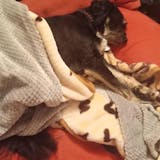Dog Coat Types & Grooming: Find the Perfect Fit
Understanding the different types of dog coats and their grooming needs is essential for keeping your canine companion healthy and looking their best. Whether your dog has fur or hair, each type of coat requires specific care. Let’s explore the main coat types, how to groom them, and which might be the best fit for different types of owners.
Fur vs. Hair: What’s the Difference?
Fur
- Growth Cycle: Fur grows to a certain length and then falls out, resulting in more frequent shedding.
- Texture and Density: Fur tends to be denser and coarser, providing a thick insulating layer.
- Grooming Needs: Regular brushing to manage shedding and prevent matting.
Hair
- Growth Cycle: Hair grows continuously and sheds less frequently.
- Texture and Appearance: Hair is often finer and softer, with various textures like curly or wavy.
- Grooming Needs: Regular trims and frequent grooming to prevent tangles and maintain coat health.
Types of Coats and How to Groom Them
Short Coat
- Examples: Beagles, Boxers
- Grooming Needs: Brush once a week to remove loose hair and distribute natural oils. Bathe as needed, usually once a month.
- Suitable For: Busy individuals or families looking for low-maintenance grooming. Ideal for owners who don’t mind some shedding but prefer minimal upkeep. Great for those prone to allergies as short coats typically shed less dander.
Long Coat
- Examples: Shih Tzus, Afghan Hounds
- Grooming Needs: Brush daily or every other day to prevent tangles and matting. Regular trims and professional grooming every 4-6 weeks.
- Suitable For: Owners who enjoy regular grooming routines and can commit to daily care. Not ideal for those with allergies due to potential for dander and shedding. Good for people who love to pamper their pets.
Double Coat
- Examples: German Shepherds, Golden Retrievers
- Grooming Needs: Daily brushing during shedding seasons (spring and fall) and weekly brushing otherwise. Regular baths to manage shedding.
- Suitable For: Active families or individuals willing to commit to regular grooming. Not ideal for those with severe allergies due to significant shedding. Suitable for those who don't mind shedding and enjoy outdoor activities with their dogs.
Wire Coat
- Examples: Terriers, Schnauzers
- Grooming Needs: Brush 2-3 times a week and hand-strip every few months to maintain texture.
- Suitable For: Owners willing to invest time in regular hand-stripping or professional grooming. Good for those who prefer minimal shedding. Not suitable for those who dislike grooming tasks or have allergies to pet hair.
Curly Coat
- Examples: Poodles, Bichon Frises
- Grooming Needs: Brush at least 3-4 times a week and trim regularly. Professional grooming every 4-6 weeks.
- Suitable For: Individuals or families who can commit to frequent grooming and professional haircuts. Excellent for those with allergies as curly coats shed less and produce fewer allergens. Ideal for owners who don’t mind investing time in grooming.
Smooth Coat
- Examples: Greyhounds, Bull Terriers
- Grooming Needs: Weekly brushing to remove loose hair and maintain a shiny coat. Regular baths to keep clean.
- Suitable For: Owners looking for minimal grooming needs. Ideal for busy lifestyles and those who want a low-maintenance pet. Good for people who don’t mind moderate shedding. May not be ideal for those with severe allergies.
General Grooming Tips
- Bathing: Use dog-specific shampoos and conditioners. Frequency depends on the coat type and lifestyle, typically ranging from once a month to every three months.
- Nail Trimming: Regular trims (every 3-4 weeks) prevent overgrowth and discomfort.
- Ear Cleaning: Check and clean ears weekly to prevent infections, especially in breeds with long or floppy ears.
- Dental Care: Brush your dog's teeth regularly, ideally daily, to prevent dental disease.
Proper grooming not only keeps your dog looking great but also promotes overall health and well-being. By understanding your dog’s coat type and grooming needs, you can ensure they remain comfortable, healthy, and happy.
P.S. Discover how NutriPaw can help support your dog's health!






